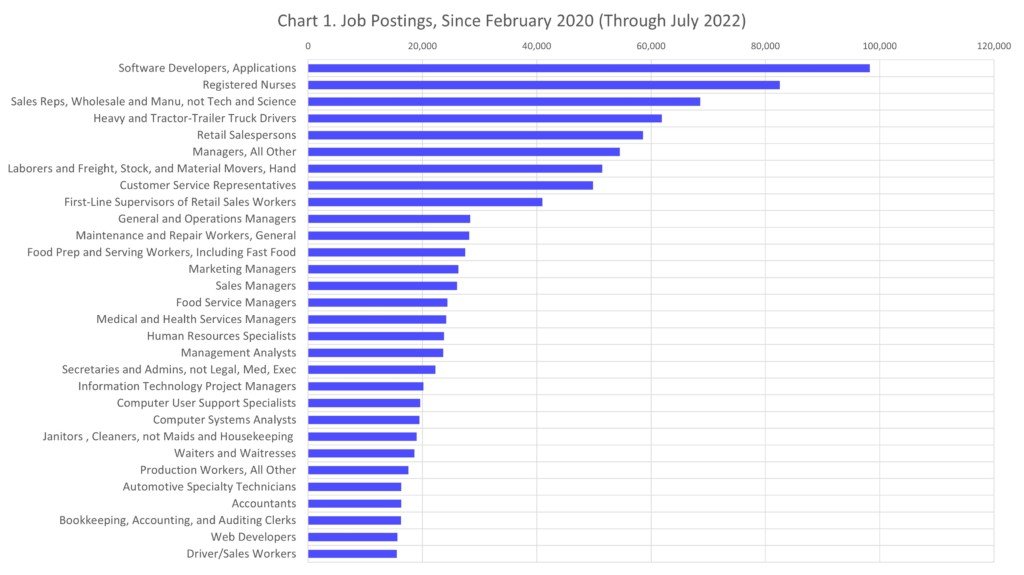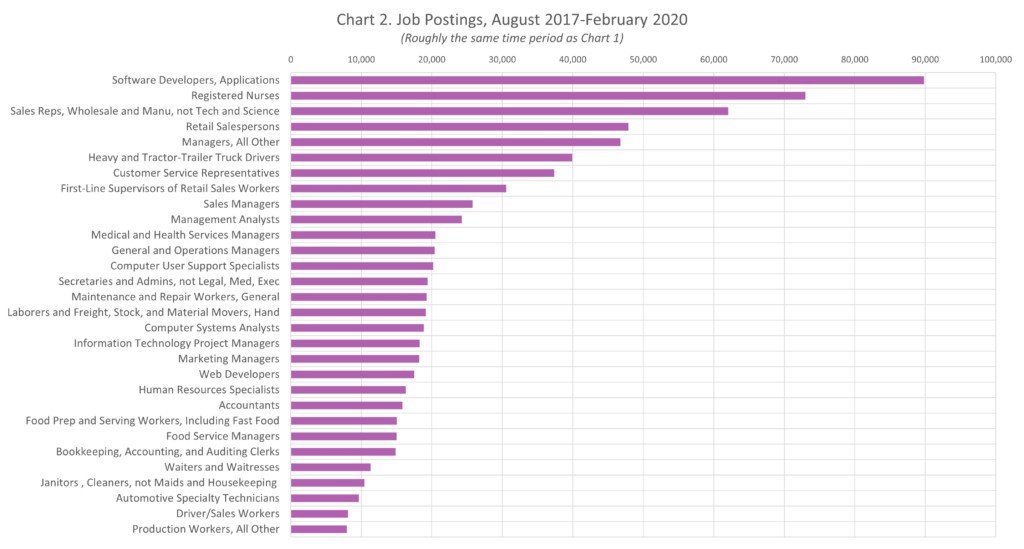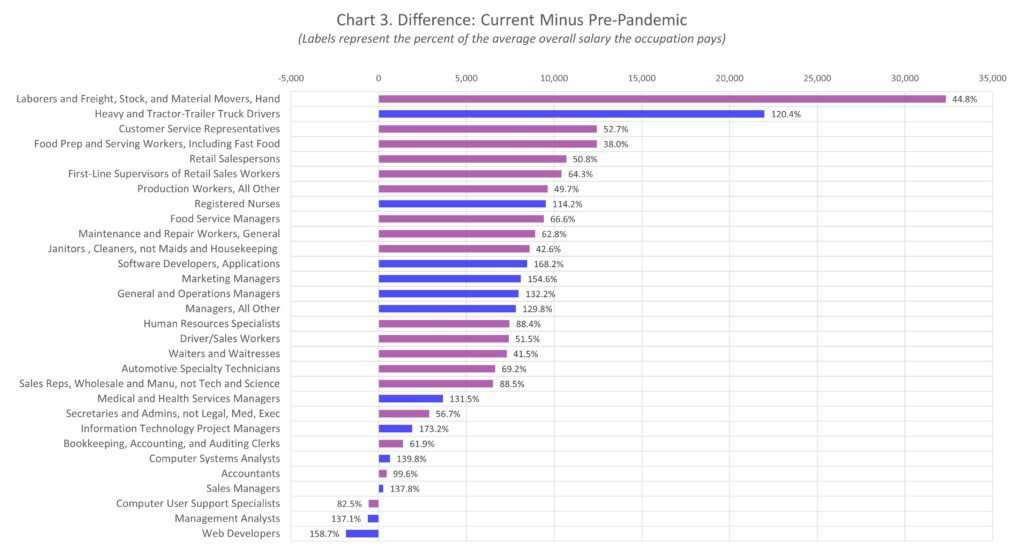With the Federal Reserve doing all it can to battle inflation (see our recent post here), expectations were that labor demand and hiring would start to cool off. But according to the latest jobs report, that didn’t happen. So we decided to take a peek under the hood and see the types of workers that Metro Atlanta employers are looking for, and how that demand has changed compared to the pre-pandemic period.
Using Lightcast‘s Labor Insight tool, we looked at employers’ most sought-after occupations in the 29-county Atlanta Metropolitan Statistical Area. See Chart 1 below.
As you can see above, Software Developers are the most sought-after occupation in the Atlanta MSA, with some 98,000 jobs postings since February 2020. Next are Registered Nurses (we always need nurses), Sales Reps, Truck Drivers and Retail Salespersons. This is a typical pattern – usually when we run this report, those particular categories are always somewhere in or near the top five most in-demand occupations. The chart below shows basically the same pattern for MSA job postings during a similar period, pre-pandemic.
So at first glance, Charts 2 and 1 look about the same. To draw out some differences between the two time periods, we simply subtracted Chart 2 data from Chart 1 data to show how demand within our MSA has changed. Chart 3 below shows that result.
While Software Developers are still the most in-demand occupation, Laborers and Material Movers experienced the greatest percentage increase in demand, followed by Truck Drivers, Customer Service Reps, Food Prep workers and Retail Salespeople. Further, to get a sense of the salary range of these occupations, we looked at the average salary that Burning Glass reported in postings over the past year. The percentages in the chart above represent what that particular occupation pays in comparison to the average overall salary. For example, we see that the average salary for Laborers and Material Movers are roughly 45 percent of the average overall salary. This could be an indication of why this occupation has increased in demand – employers are having a hard time finding workers who will work for these salary ranges. In fact, eight of the top ten occupations ( as per those with the greatest increase in demand) pay below average, with the only exceptions being Truck Drivers and Registered Nurses. This latter point underscores how important it is for our workforce ecosystem to continue upskilling workers into these high-demand occupations.




